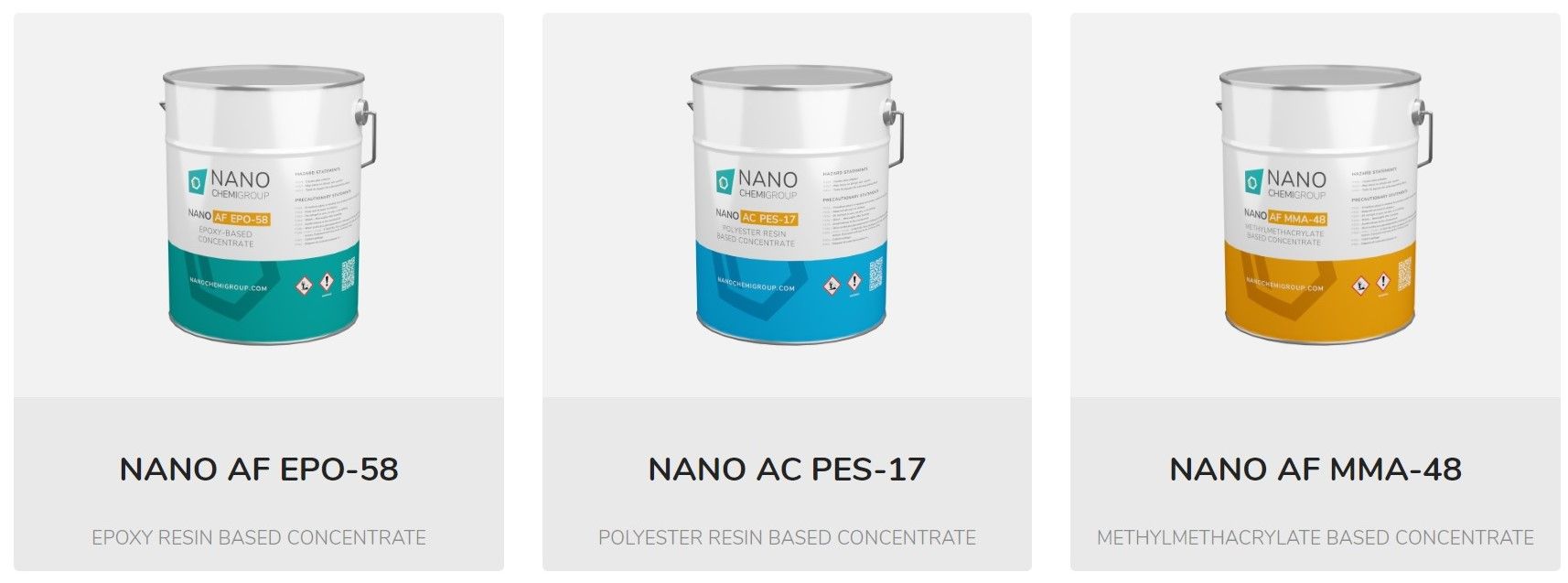Epoxy resins are one of the most overlooked raw materials of the 20th century.
While the general public would rarely notice their application, epoxy resins can be seen all around. They are used to build things like aircraft and snowboards, bicycles and vehicles, among so many other things.

Their versatility is based on the wide range of properties they possess. Epoxy resins can be transparent or opaque, they can be rigid or flexible, and because they are excellent insulators, they are widely used in the electronics industry to prevent short circuiting as well as to protect against moisture and dust
However, the application of carbon nanotubes to epoxy resin gives them even greater potential. Because CNTs give epoxy resins an added quality – conductivity. A property that is likely to make them one of the most underrated raw materials of the 21st century.
One study, published in the journal ResearchGate proved that the, “… incorporation of multi-walled carbon nanotubes (MWCNT) to epoxy resin results in a sharp insulator-to-conductor transition…”
Moreover, adding carbon nanotubes to epoxy resins makes them stronger.
As a 2010 study published in the journal Carbon, found, with just a 16.5% loading of carbon nanotubes (CNTs), “Both mechanical and electrical properties of the CNT/epoxy composites were dramatically improved with the addition of the CNTs. The Young’s modulus and tensile strength of the composites reach 20.4 GPa and 231.5 MPa, corresponding to 716% and 160% improvement compared to pure epoxy.”

An additional study conducted at the New Jersey Institute of Technology, tested the effect of various types of carbon nanotubes (CNTs) in epoxy resins and TETA (triethylenetetramine, a common crosslinker or ‘hardener’ used in epoxy curing). Concluding that the way that CNTs interacted, “… with the polymer chains affected the physical, thermal and electrical properties of the composites. For example, the enhancement in tensile strength was found to be 7.2, 11.2, 11.4 and 14.2 percent for raw CNTs, carboxylated CNTs, octadecyl amide functionalized CNTs and hydroxylated CNTs, respectively at 0.5 wt% CNTs loading.”
Alongside making the polymers stronger, the nanotubes also, “… improved the glass transition temperature of the epoxy composites, and CNTs-OH showed highest enhancement (34%) in Tg. Addition of CNTs in polymer matrix also reduced the electrical resistance reasonably.”
Consequently, the range of applications for epoxy resins has been growing rapidly in recent years.
For example, a concentrated mixture of bisphenol A/F epoxy resin with as little as 0.5 wt.% of carbon nanomaterials can be used in polymer production to provide a permanent increase in antistatic function, as well as dissipation or electroconductivity. In addition, the mechanical properties of the polymer are boosted, and the nanotubes also provide thermal and electromagnetic conductivity, abrasion resistance, increased durability and strength, as well as a reduction in weight.

Today, modern carbon nanotube epoxy resins are often used in the production of paints, coatings, and ASD or ESD floorings. They can also be found in fibreglass and/or carbon composites, as well as printing rollers.
In a world where products are ever more specialized, the need for specialized epoxy resins is growing. Epoxy resins with added carbon nanotubes are providing the properties that the modern world needs.
Photo credit: Pixabay, NANOCHEMIGROUP, Dekor Okur from Pixabay & VisionPic .net from Pexels
